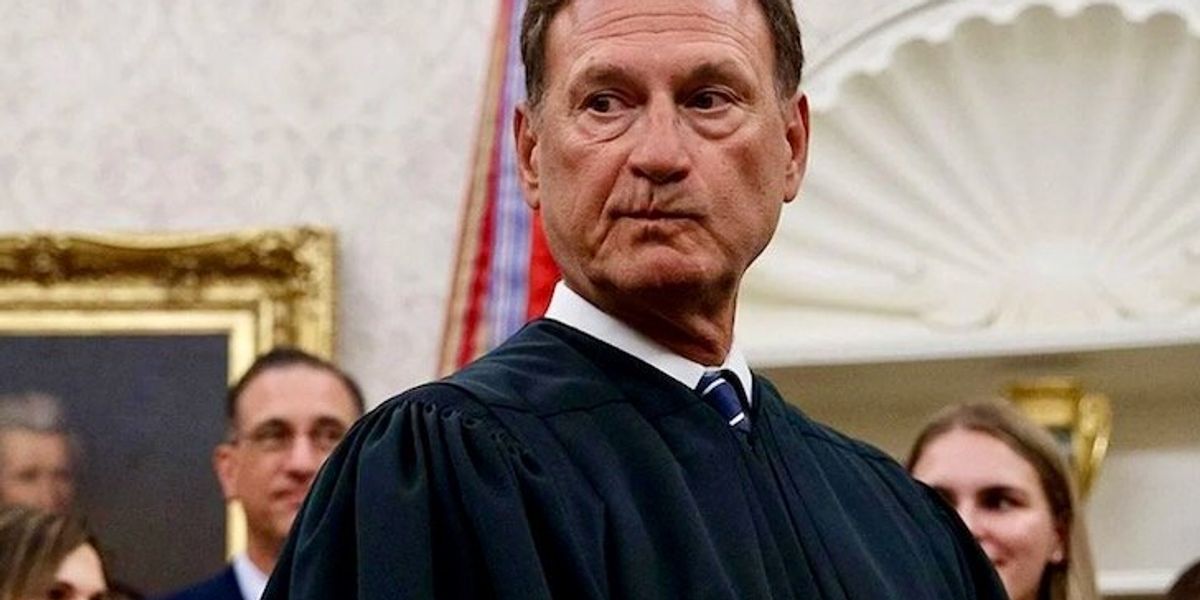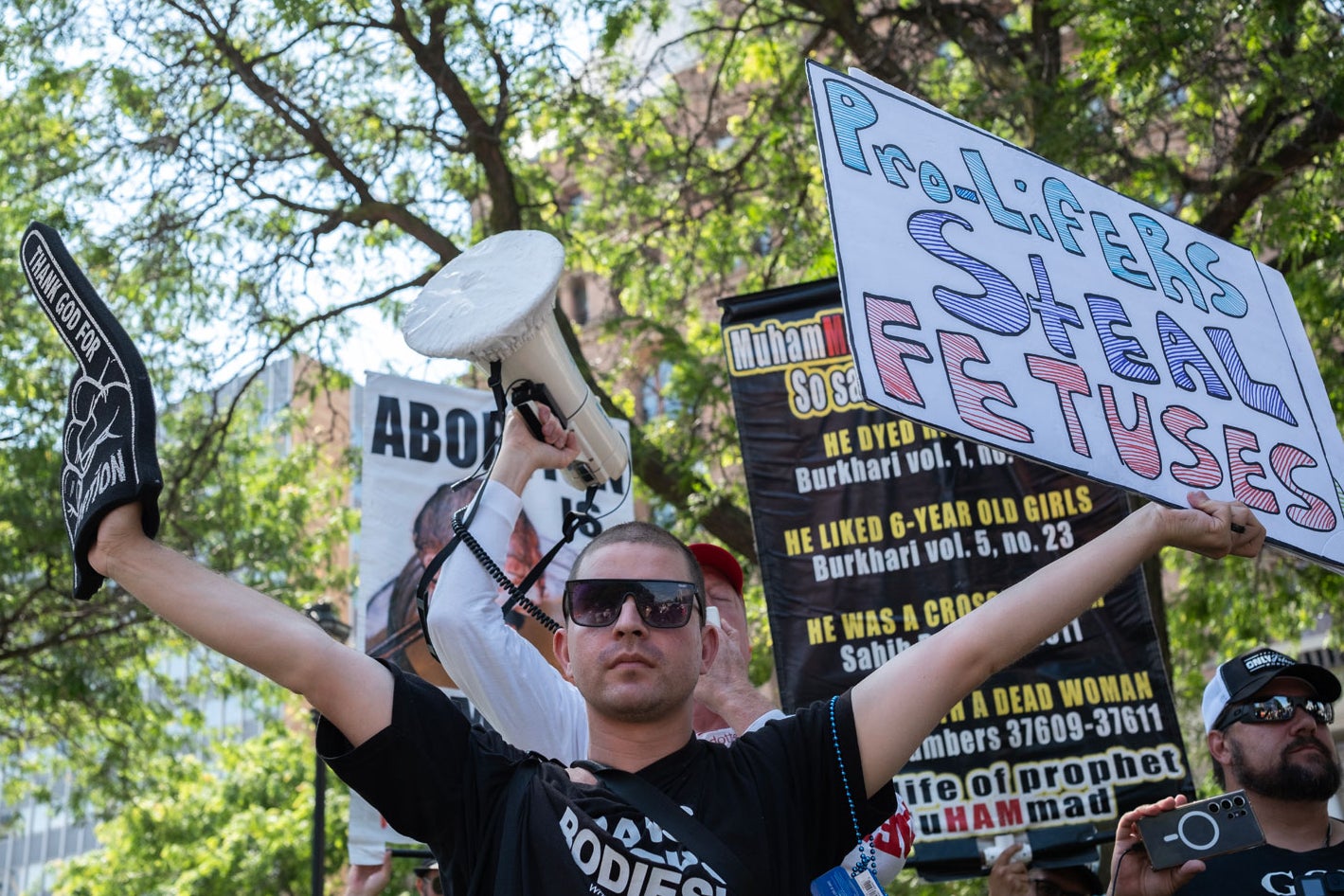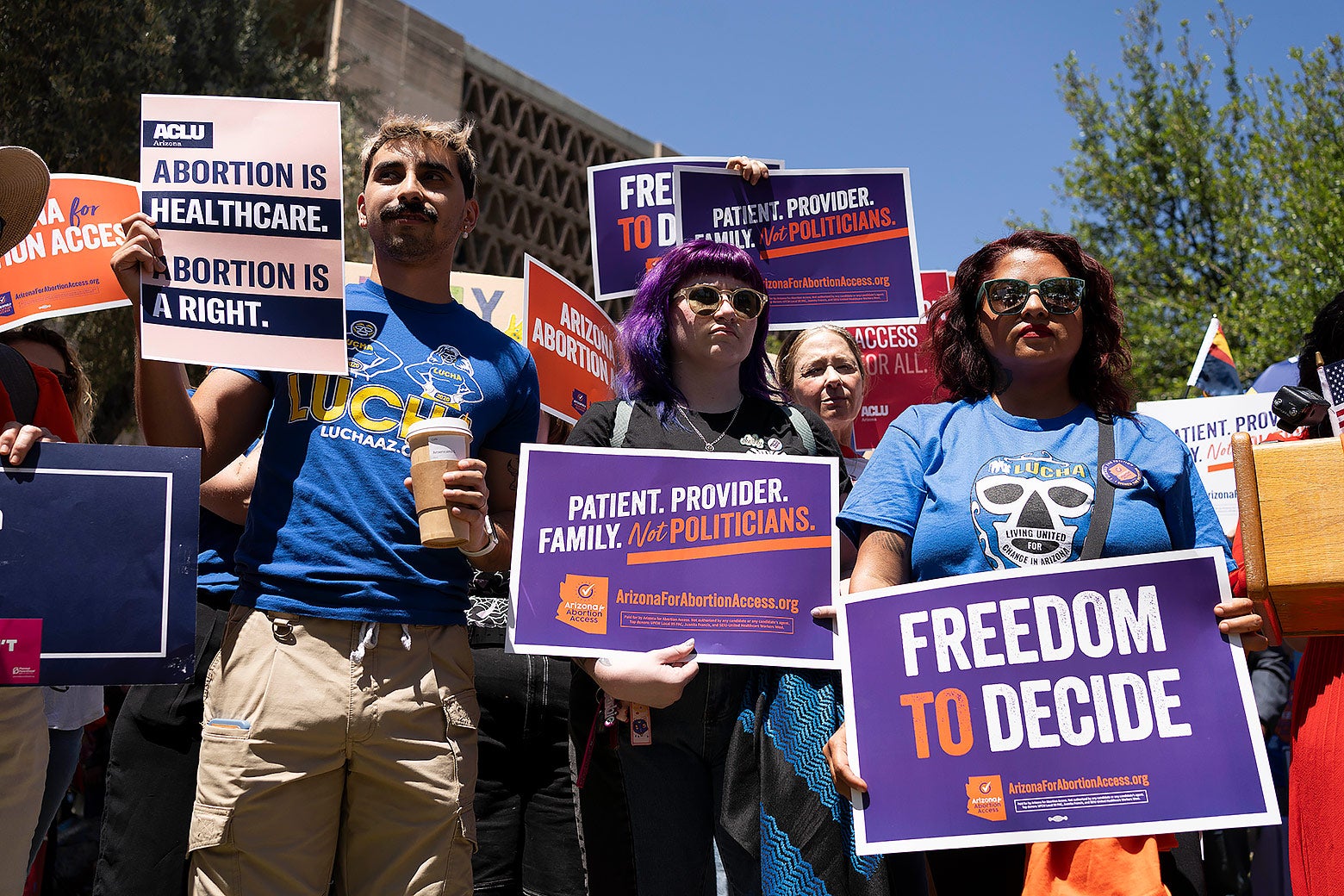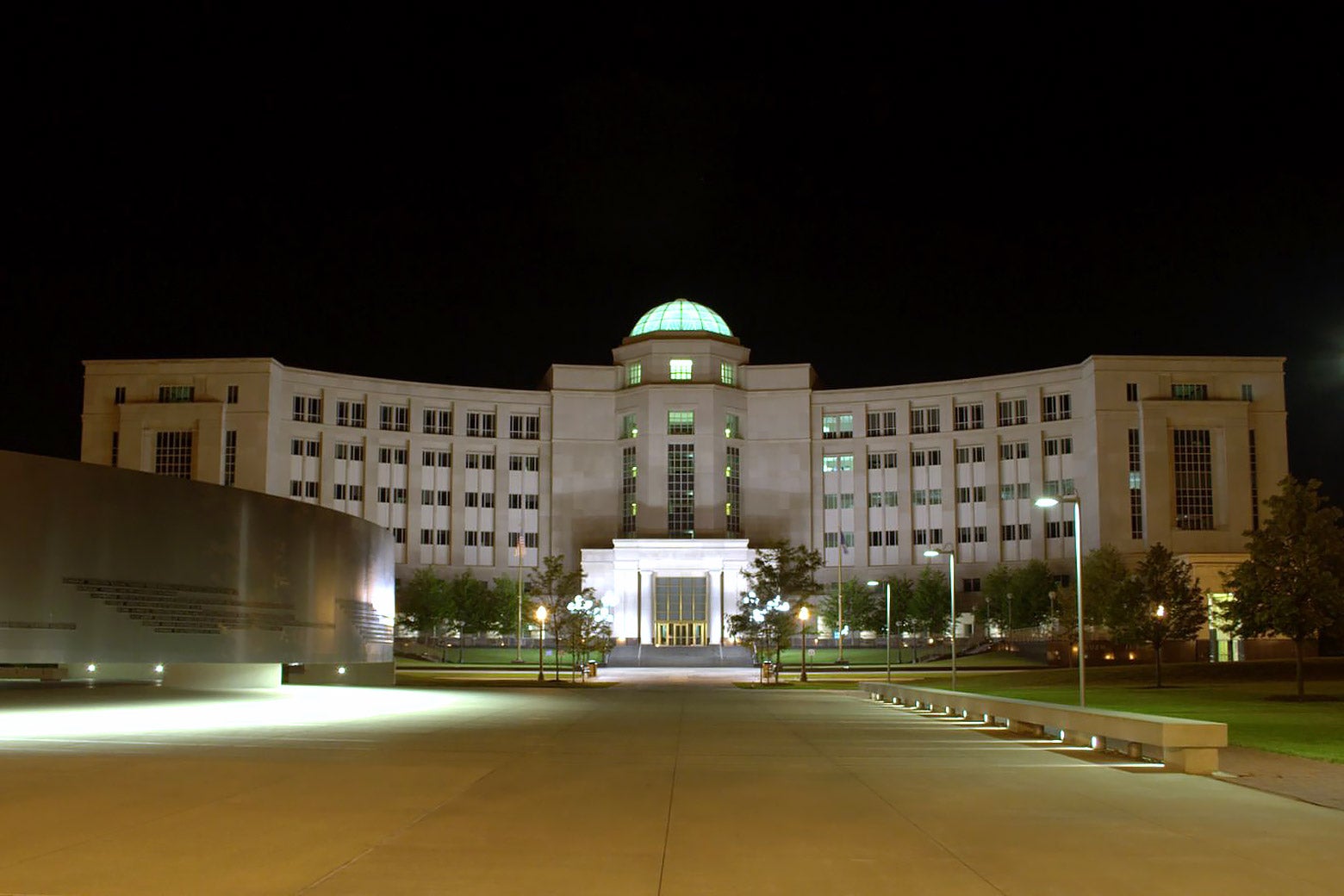Ahead of abortion vote, Ohio Supreme Court has ordered a rewrite of some misleading ballot language
Associated PressCOLUMBUS, Ohio — A wildly divided Ohio Supreme Court ruled late Tuesday that only one element of the disputed ballot language for describing a closely watched fall abortion rights question is misleading and must be rewritten. In Tuesday’s ruling, the court invalidated board language that suggested the amendment would limit “citizens of the State” from passing laws to restrict abortion access, when it actually limits state government from doing so. In a majority opinion written by Fischer, the court rejected an argument made by Republican Attorney General Dave Yost that “citizens of the State” and “the State” are the same, on grounds that Ohio has a government “of the people.” Fischer noted that the Ohio Constitution never uses the phrase “citizens of the state,” that citizens and the state are “not necessarily synonymous,” and that the approved language, as a result, “would not accurately tell the voters what they are being asked to vote on.” “Instead of describing a proposed amendment that would establish a right to carry out reproductive decisions free from government intrusion,” he wrote, “the ballot language’s use of the term ‘citizens of the State’ would mislead voters by suggesting that the amendment would limit the rights of individual citizens to oppose abortion.” The abortion amendment, as phrased, would establish “a fundamental right to reproductive freedom” with what backers describe as “reasonable limits.” The proposal would prohibit government restrictions on abortions and other forms of reproductive care up until the point of fetal viability outside the womb. The abortion rights campaign’s lawsuit challenged five separate pieces of the state’s language, including its reference to the right to “medical treatment” rather than to making and carrying out “one’s own reproductive decisions.” On Tuesday, justices found that wording was not misleading, but “imprecise at worst.” The court also upheld challenged sections of the ballot language that: omit references to forms of reproductive care besides abortion that would be protected under the amendment; and suggest physicians alone, as opposed to a professional determination of fetal viability, determine abortion decisions. The state’s attorneys told the court that when the amendment’s backers objected to the use of “medical treatment” in the language, as a substitute for “reproductive decisions,” they were acting “as if making a decision in one’s own mind is somehow controllable by outside forces.
History of this topic
Judge Strikes Down Ohio Abortion Ban, Citing Reproductive Rights Amendment
Associated Press
County judge strikes down Ohio abortion ban, citing voter-approved reproductive rights amendment
LA TimesNebraska Supreme Court will hear lawsuit challenging measure to expand abortion rights
Associated PressOhio voters approved reproductive rights. Will the state’s near-ban on abortion stand?
Associated PressRepublican legislatures in some states are trying to keep abortion off the ballot
Associated Press
Judge weighing Ohio abortion rights amendment’s legal impact keeps anti-abortion groups clear
Associated PressOpponents gave input on ballot language for abortion-rights measure, Ohio elections chief says
Associated PressOhio voters just passed abortion protections. When and how they take effect is before the courts
Associated Press
Ohio voters just passed abortion rights protections. When and how they take effect is before the courts
LA TimesVoters back abortion rights, but some opponents won’t relent. Is the commitment to democracy in question?
Associated PressRepublican faction seeks to keep courts from interpreting Ohio’s new abortion rights amendment
Associated Press
How Republican Courts Could Sabotage the Ohio Abortion Vote and Future Ballot Measures
SlateAfter Ohio vote, advocates in a dozen states are trying to put abortion on 2024 ballots
Associated PressVoters in Ohio backed a measure protecting abortion rights. Here’s how Republicans helped
Associated Press
Landmark judgement for abortion rights takes center stage in Republican-run Ohio, Joe Biden praises Ohioans
Hindustan Times
Ohio enshrines abortion rights, bolstering an undeniable trend in American politics.
Slate
Ohio leads as abortion rights drive string of victories in US elections
Al Jazeera
"This isn't the end": Top Ohio Republican vows effort to undo abortion amendment backed by voters
Salon
Column: Why Ohio’s abortion vote should scare California
LA TimesOhio voters enshrine abortion access in constitution in latest statewide win for reproductive rights
Associated Press
Voters in US state of Ohio to weigh in on abortion rights
Al Jazeera
Ohio voters enshrine abortion access in constitution in latest statewide win for reproductive rights
LA TimesAP Election Brief | What to expect when Ohio votes on abortion and marijuana
Associated PressAn Ohio amendment serves as a testing ground for statewide abortion fights expected in 2024
Associated PressMissouri appeals court rules against ballot summary language that described ‘dangerous’ abortions
Associated PressMisinformation is flowing ahead of Ohio abortion vote. Some is coming from a legislative website
Associated Press
Anti-abortion campaigners try to break their losing streak
Hindustan TimesVoting begins in Ohio in the only election this fall to decide abortion rights
Associated PressOhio wants to revive a strict abortion law. Justices are weighing the legal arguments
Associated PressA judge has rewritten Missouri ballot summary language that described ‘dangerous’ abortions
Associated Press
Ahead of Ohio abortion vote, a court says some ballot language is misleading, must be rewritten
The IndependentChallengers seek rewrite of Missouri abortion-rights ballot measures, calling them misleading
Associated PressOhio is about to vote on abortion rights. Misinformation about the proposal is rampant
Associated PressAn Ohio ballot measure seeks to protect abortion access. Opponents’ messaging is on parental rights
Associated PressBackers blast approved ballot language for Ohio’s fall abortion amendment as misleading
Associated PressOhio vote shows enduring power of abortion rights at ballot box, giving Democrats a path in 2024
Associated Press
Issue 1: Ohio Rejects Proposal Aimed at Raising Threshold for Altering State Constitution
News 18Ohio’s Issue 1 would have made protecting abortion rights harder. Data shows why it failed
Associated Press
In Ohio, a fight over democracy — and abortion
LA TimesVoters in Ohio reject GOP-backed proposal that would have made it tougher to protect abortion rights
Associated PressOhio voters will decide on abortion access in November ballot
Associated Press
Abortion messaging roils debate over Ohio ballot initiative. Backers said it wasn't about that
The IndependentAbortion messaging roils debate over Ohio ballot initiative. Backers said it wasn’t about that
Associated Press
Editorial: Ohio lawmakers want to subvert democracy to stop voters from protecting abortion access. Shame on them
LA TimesElection on constitutional amendments in Ohio could impact abortion rights measure
Associated PressElection on constitutional amendments in Ohio could impact abortion rights measure
Associated PressOhio abortion rights backers submit nearly double needed signatures for fall ballot measure
Associated Press
Ohio abortion rights backers submit nearly double needed signatures for fall ballot measure
LA TimesWith abortion rights on the line, an August special election has Ohio election offices scrambling
Associated PressDiscover Related






































